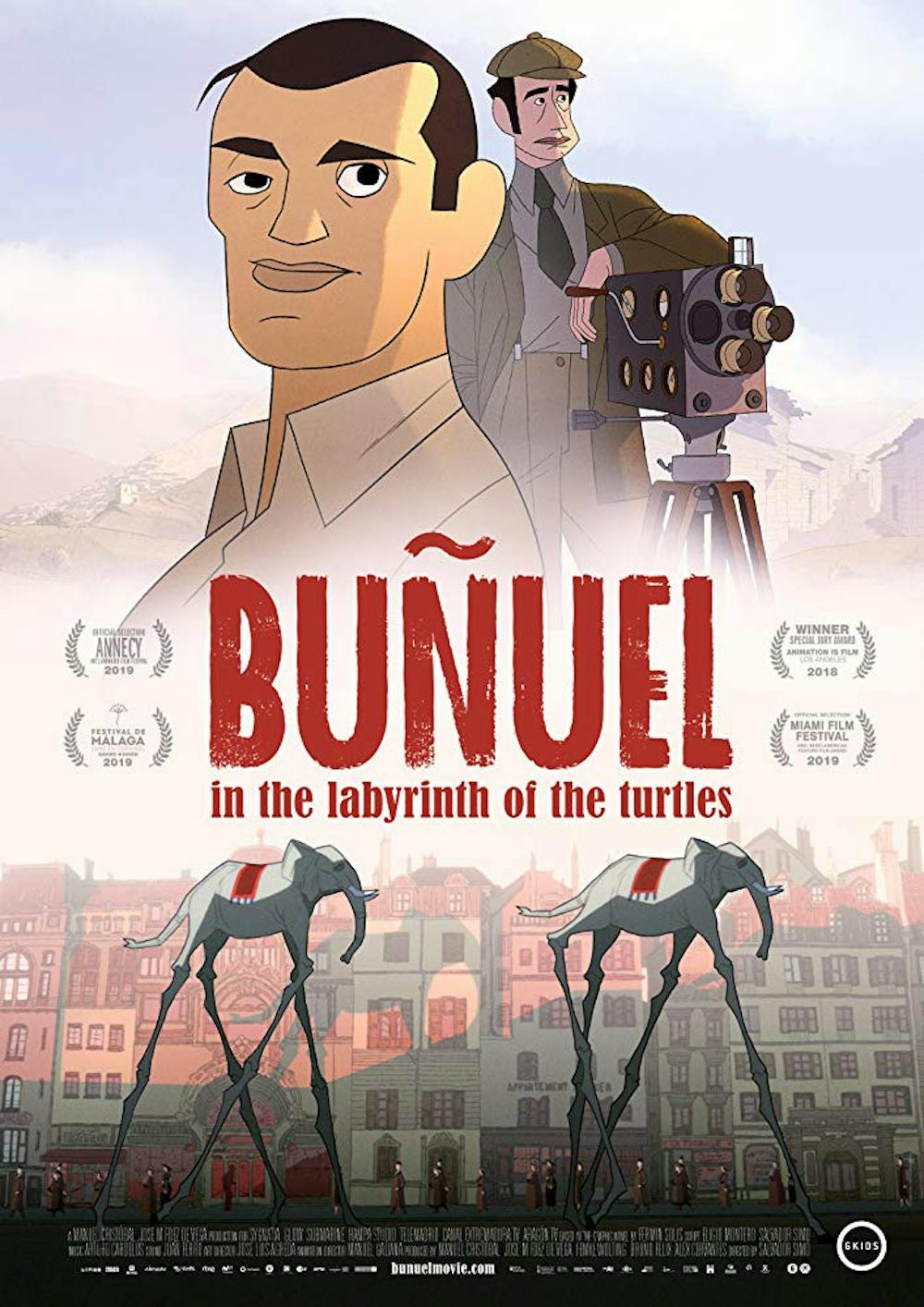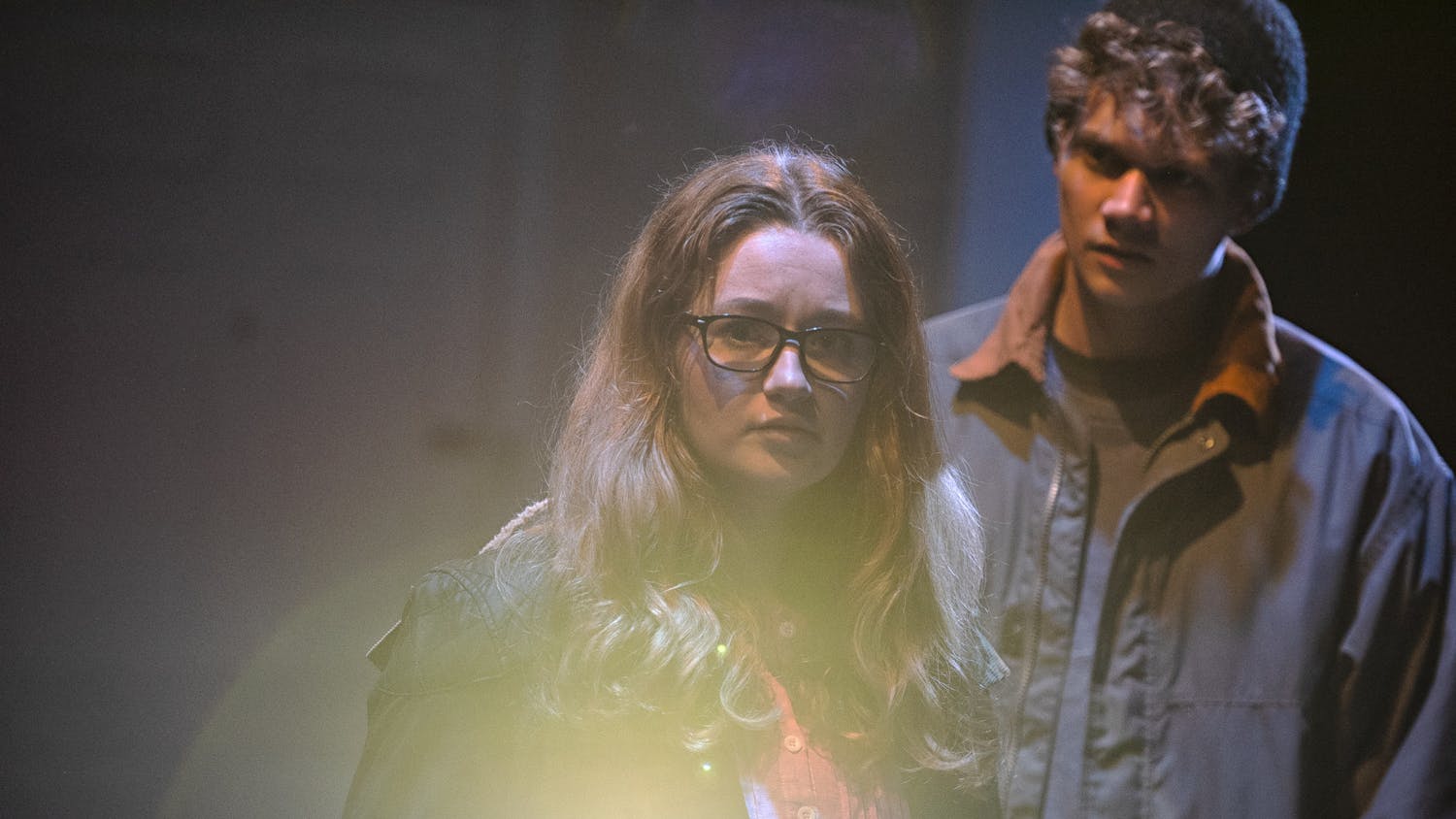Tackling the tumultuous life of controversial cinematic pioneer Luis Buñuel, the animated film “Buñuel in the Labyrinth of the Turtles” brought a pensive side to the Hirschfield Film Series on Saturday, Nov. 9.
Director Salvador Simó Busom crafts a narrative around Buñuel filming his documentary, “Las Hurdes: Land without Bread.” In the aftermath of his fall from grace with L’Age d’Or ushering in considerable scandal, Buñuel is left with a slough of insecurities interspersed with doubts about his split from former colleague, surrealist artist Salvador Dalí. The opportunity for filming comes as a surprise when Ramón Acín, fellow artist and friend, wins a lottery and decides to invest in Buñuel’s dramatized documentary expounding on the poverty and barren state of Las Hurdes, a remote town located up in the mountains of Spain.
Busom renders the physical journey and creative process in hues of yellow and purple. Riddled with isolated guitar, piano and accordion chords to bring dimension to the film, Buñuel in the Labyrinth of the Turtles is eerily atmospheric. In its essence, it strangely captures the surrealist world as we see an exaggerated take on the frustrations Buñuel undergoes. The gorgeous color palette highlights every warm sunset and melancholic rainstorm as the crew trek through the shell-studded cliffside and explore the depths of destitution.
The film’s stunning palette and simple, flattened animation capture the abstraction and surrealism behind Buñuel’s process, but the emphasis proves to be a double-edged sword. On one hand, it fully reflects the deliberation behind capturing Buñuel’s underlying vulnerability through dreams, particularly in the scenes that dive into his psyche. Busom doesn’t shy away from incorporating provocative scenes displaying murder or vulnerability and, in that, builds towards a complex sketch of Buñuel. The film opens up with a flashback as a young Buñuel fears disappointing his father and tiptoes around him, granting audiences a tender rendering of his childhood isolation.
With the emphasis on capturing Buñuel’s surreal blend of thoughts and emotions interspersed with each other, the film grows rather difficult to understand and leaves room for questions. To this effect, watching Buñuel may prove to be rather frustrating in its purposeful ambiguity. Especially when portraying an artist of his nature, Luis Buñuel isn’t the easiest, most predictable subject. The push for authenticity is refreshing, however — and, in that, linear storytelling is compromised for beauty and depth. Buñuel is a film that requires you to care about the artist: not just what he creates, but why he does it all.
To his credit, Busom ultimately lightens the heavy introspection by dispersing humor throughout the film. Additionally, the film’s show-stopping cinematography lightens its weighty subject matter. Viewers are almost tempted to forget about undercurrents of political and emotional grief as they take in the beauty of every frame. The film deftly incorporates elements of the documentary as well, seamlessly blending in snapshots of the past and present to draw viewers directly in.
Dramatization through Luis’ eyes shows through almost inceptively — take animal murder, for example. In the transition, humor first comes through as characters poke at one another, refusing to murder a rooster on a string. The vendor unintentionally jests as well — “Which one?” he asks, in response to being offered payment to kill “it,” directing his query to the people rather than the animal. Right as the audience almost forgets the presence of death in the lighthearted jest, however, the film fuses into black and white, plunging us dramatically in a transition to violently emphasized slaughter.
It is not easy to capture the complexities underlying severed relationships between oneself and others. Frankly, an hour and a half is far too short to do so, especially when dealing with subject matter of unresolved trauma and self-doubt. There will indubitably be questions unanswered, emotional volatility felt and an overarching cloud of frustration left behind as viewers, previously immersed in Buñuel’s world just a minute ago, are left to comprehend. Nevertheless, the exposition of emotion and suffering is a commendable effort and the film is thoughtful in its unapologetic curiosity.
Reel Critic: 'Buñuel in the Labyrinth of the Turtles'

Comments



